#art informel
Photo

Robert Branham (1926-2013) — Composition V [mixed media on board, 1985]
3K notes
·
View notes
Text


Within the history of the German Informel the art of Gerhard Hoehme (1920-1989) occupies a very special position: although initially inspired by the French Tachisme Hoehme soon left the traditional flat canvas behind in order to protrude into space. Later he also incorporated language and history in his canvases that took on an increasingly spatial character. As one of a only a few artists of the Informel Hoehme also dealt with history, reflected the atrocities of World War II and the Nazi regime and also processed Paul Celan’s epochal work. In 1998 Hatje Cantz published Hoehme’s catalogue raisonné, a massive tome edited by Margarete Hoehme that with Gottfried Boehm’s texts also offers a very poetic account of the artist’s artistic development. Boehm chronologically follows Hoehme’s artistic development, fathoms his roots in French Tachisme and shows how the intense discussion of history and literature over time resulted in a unique oeuvre within German postwar art. By using everyday materials, scribbled lines and installative components on his shaped canvases Hoehme constantly reflected society, himself as a person and his own art, a modus operandi that also emphasized the in-between-ness of his art.
The present oeuvre catalogue is a beautifully designed and lavishly illustrated book that meticulously documents every work and every stage of Gerhard Hoehme's career that through Gottfried Boehm's emphatic writing rightly deserves the title of a reference work.
#gerhard hoehme#art book#catalogue raisonne#art informel#informel#abstract art#hatje cantz#german artist#art history#modern art#book
30 notes
·
View notes
Photo

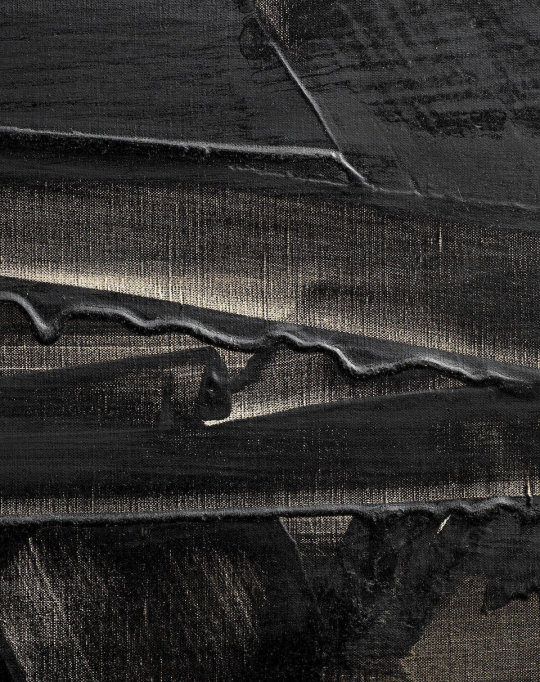

Pierre Soulages (24 December 1919 – 26 October 2022)
Pierre Soulages is considered a major figure of post-war European abstraction, alongside Hans Hartung, George Mathieu, Serge Poliakoff and Jean-Paul Riopelle.
He’s particularly renowned for his “outrenoir” (“beyond black”) series of paintings, which feature matte and glossy black fields interrupted by ridges, scores, and gashes; the artist is interested in how black paint absorbs and reflects light.
Since making his gallery debut in 1947, Soulages has exhibited at the Museum of Modern Art, The Louvre and the State Hermitage Museum (he was the first living artist to show at the institution), and his work has been acquired for the collections of the Centre Pompidou, The Guggenheim, Tate Modern, and the National Gallery of Art in Washington.
Applying the paint in thick layers, Soulages’ painting technique includes using objects such as spoons, tiny rakes and bits of rubber to work away at the painting, often making scraping, digging or etching movements depending on whether he wants to evoke a smooth or rough surface. The texture that is then produced either absorbs or rejects light, breaking up the surface of the painting by disrupting the uniformity of the black.
Peinture 65 x 92 cm, 9 février 1960, 1960, signed; signed and dated 9 Fev 60 on the reverse, oil on canvas, 65 by 92 cm, 25 9/16 by 36 1/4 in. © Bonhams 2001-2020.
#art#paiting#peinture#pierre soulage#rip#rip pierre soulage#abstracart#abstract expressionism#art informel#black#outrenoir#beyondblack#hans hartung#serge poliakoff#state hermitage museum#centre pompidou#guggenheim#tate modern#iconic#bonhams#texture#brush
63 notes
·
View notes
Photo
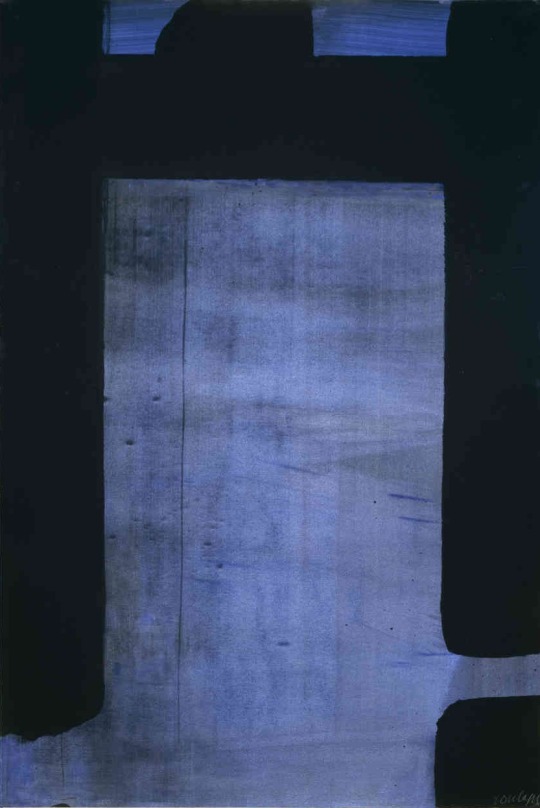
Pierre Soulages (24 December 1919 – 26 October 2022)
Pierre Soulages is considered a major figure of post-war European abstraction, alongside Hans Hartung, George Mathieu, Serge Poliakoff and Jean-Paul Riopelle.
He’s particularly renowned for his “outrenoir” (“beyond black”) series of paintings, which feature matte and glossy black fields interrupted by ridges, scores, and gashes; the artist is interested in how black paint absorbs and reflects light.
Since making his gallery debut in 1947, Soulages has exhibited at the Museum of Modern Art, The Louvre and the State Hermitage Museum (he was the first living artist to show at the institution), and his work has been acquired for the collections of the Centre Pompidou, The Guggenheim, Tate Modern, and the National Gallery of Art in Washington.
Preferring to suspend the paintings like walls, he uses wires to hang them in the middle of the room, "I always liked paintings to be walls rather than windows. When we see a painting on a wall, it's a window, so I often put my paintings in the middle of the space to make a wall. A window looks outside, but a painting should do the opposite—it should look inside of us"
Untitled, 1977, Vinyl paint on cardboard, 42 9/10 × 28 7/10 in | 109 × 73 cm.
#art#painting#rip#pierre soulage#rip pierre soulage#abstractart#abstract expressionism#window#wall#black#blue#outrenoir#beyond black#art informel#light#opening#doorway#heavensdoorways
24 notes
·
View notes
Text

Antoni Täpies
Taches et chiffres (Spots and Numbers)
1972
#modern art#abstract#antoni tapies#tapies#abstract expressionism#abstraction#spanish sculptor#spanish painter#haute pate#matter painting#art informel#spanish#spanish artist#1970s#1970s art#70s art
2 notes
·
View notes
Text

Antoni Tàpies, Space, 1956, latex paint with marble dust on canvas, 194.6 x 170cm.
7 notes
·
View notes
Photo

Mario Hergueta
AR-Studie, 2022
Digitaldruck auf Leinwand, AR-Animation
(Photo/Film still: Studiosituation)
©Mario Hergueta/ VG Bild-Kunst,2022
5 notes
·
View notes
Text
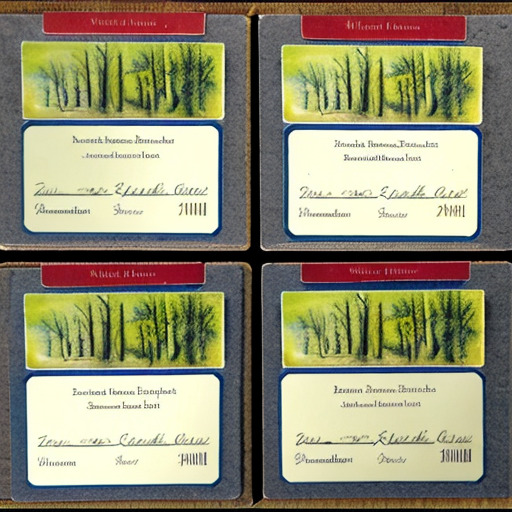
#Art Informel#Art#LDM Oram#Bureau#Orchard#AI#GetIMG#Pierre Tal-Coat#Henri Michaux#Oran#Fantasy#Woods
1 note
·
View note
Text
New crumple painting in progress
New crumple painting begun in March of 2024 (acrylic on wrapping paper) / Neues Knitterbild im Werden, begonnen im März 2024 (Acryl auf Packpapier)
Not finished – more colors and details to be added / Nicht fertig – weitere Farben und Details werden dazukommen
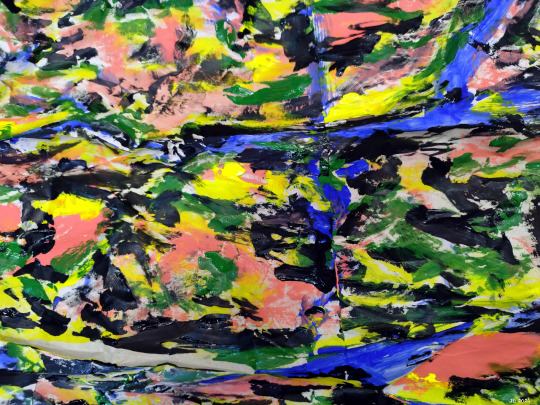
View On WordPress
#2024#abstract#abstract art#acrylic#crumple painting#in progress#informel#Johannes Beilharz#painting
35 notes
·
View notes
Text
Halo of Moses (Mojžíšova svätožiara)

6 notes
·
View notes
Text
Frohe Ostern-Happy Easter with a "Touch Of RedPink"
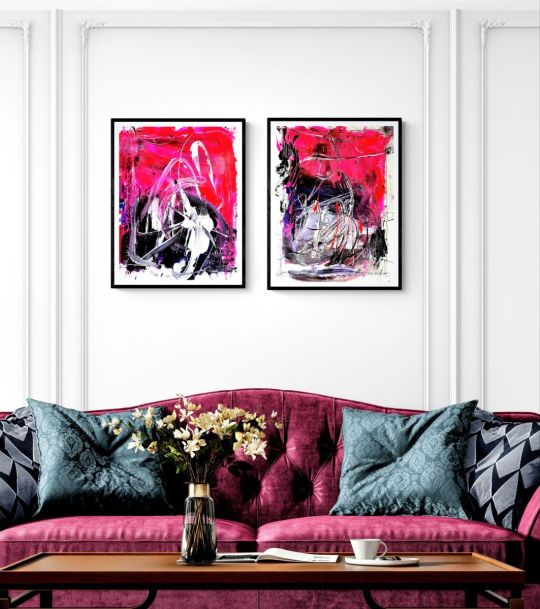
View On WordPress
#Abstract#Abstract expressionism#Acrylic painting#color up your home#Expressive art#Expressive Malerei#Informel#interiordesign#Interiordesign ideas#modern art#painting#Saatchi Art Gallery#Touch Of RedPink#Touch Of RedPink II#Vera Komnig
0 notes
Text
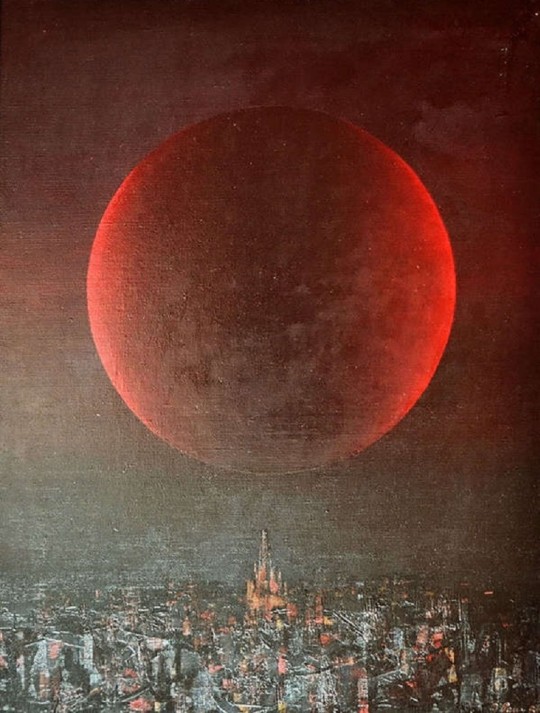
Jaroslav Paur (1918-1987) — Burnt Down City [oil on canvas, 1980]
2K notes
·
View notes
Text


Carl Buchheister (1890-1964) both before and after WWII was one of Germany's prime abstract artists. Although his father had other intentions for his son Buchheister after the First World War pursued a career as painter in his hometown Hannover, a city that in the 1920s was home to a number of remarkable artists, among them not only Kurt Schwitters but also Friedrich Vordemberge-Gildewart and Rudolf Jahns with whom he formed the group "die abstrakten hannover". From 1926 on he also was a regular at Herwarth Walden's gallery "Der Sturm" in Berlin which further advanced his career and recognition, probably also leading to his membership in the Paris group "abstraction création". At the time Buchheister equally followed the rigid geometry of constructivism and a more organic, sensual abstraction.
Like most avant-garde art his works were labeled "degenerate art" during the Third Reich and he returned to painting figuratively, something he also did during his war service between 1939 and 1945. After the war Buchheister first retreated into his studio and between 1946 and 1948 redefined his style towards an informalism infused with impressions of nature and a a free reign of color.
The present two volume catalogue raisonné, edited by Willi Kemp and published by Verlag der Buchhandlung Walther König, offers a complete account of Buchheister’s abstract work: while the first volume contains various texts by art historians and friends/contemporaries like Otto Piene, Karl Otto Götz as well as a concise biography by the editor, the second volume, a tome of more than 700 pages, is entirely dedicated to Buchheister's paintings, drawings, prints etc. Chronologically split into the time before 1934 and after 1945, thus leaving out the artist's figurative work during the Third Reich, the catalogue enables the reader to track his development from early constructivism to the late and significantly less rigid informalist works. What becomes obvious is the fact that Buchheister never quite was a rigid and dogmatic constructivist but a deeply sensual artist whose art gradually opened up to the sensual impressions his late works are characterized by.
#catalogue raisonne#carl buchheister#abstract art#art book#art history#constructivism#art informel#book
10 notes
·
View notes
Text
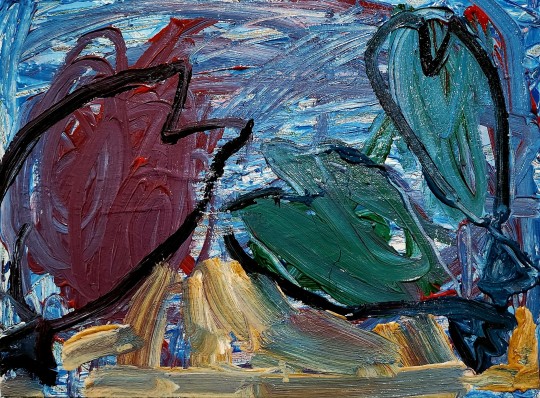
three fish
instagram @artist_jang.aeran
1 note
·
View note
Text

N164 Movienite, 2022, spray on canvas, 65"x105" Backyard projector canvas on Saturday, abstract Pliage painting on Sunday.
#art#painting#abex#gutai#miskines#contemporaryart#buffalony#abstractexpressionism#tachisme#informel#action painting#pliage art#folding#neighbors#movie nite#backyard
0 notes
Text
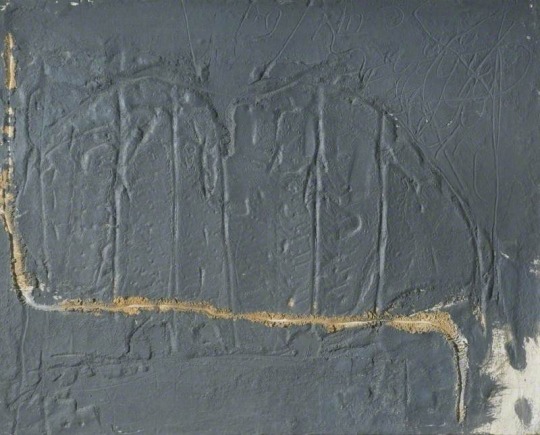
Grey Relief with an Ochre Line
1960-1961
Antoni Tàpies
#modern art#art history#antoni tapies#tapies#abstract expressionism#abstract painting#abstract art#spanish painter#haute pate#art informel#matter painting
5 notes
·
View notes